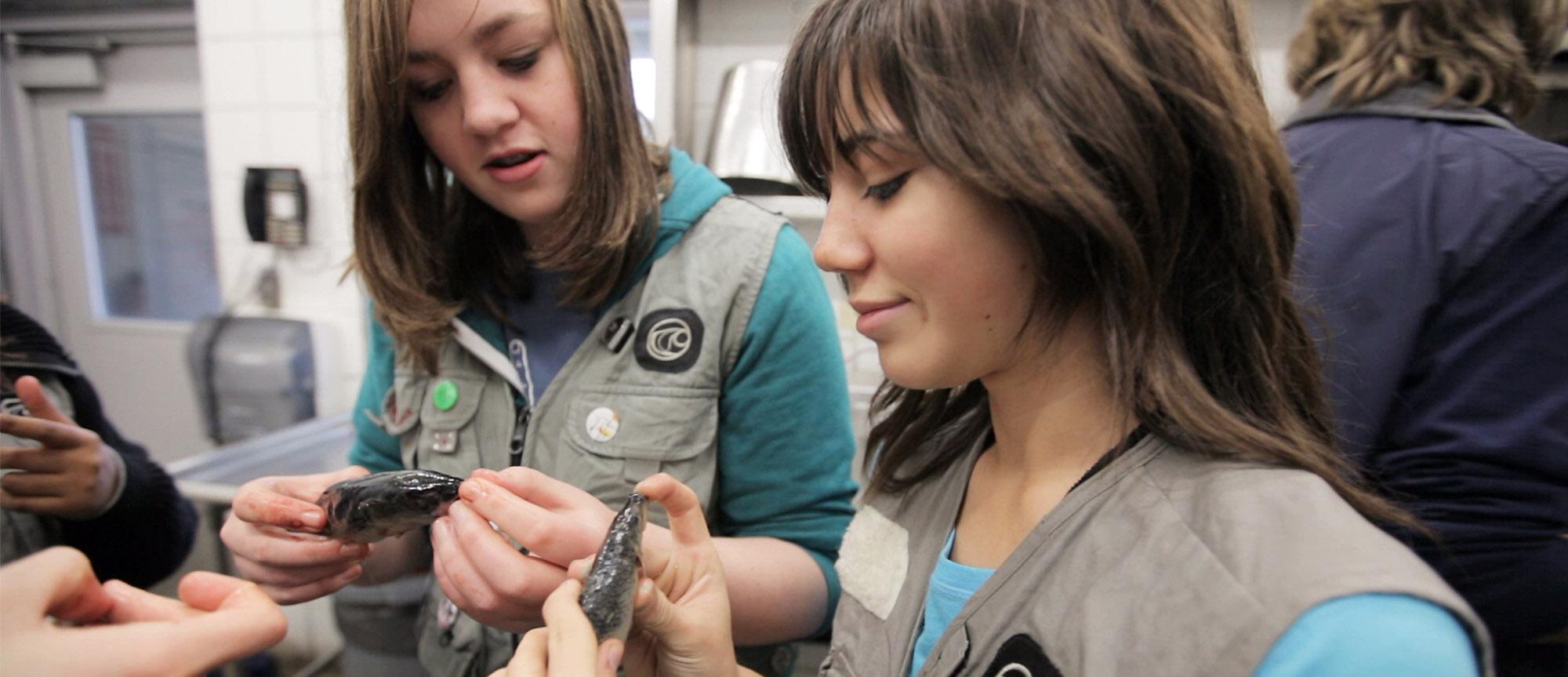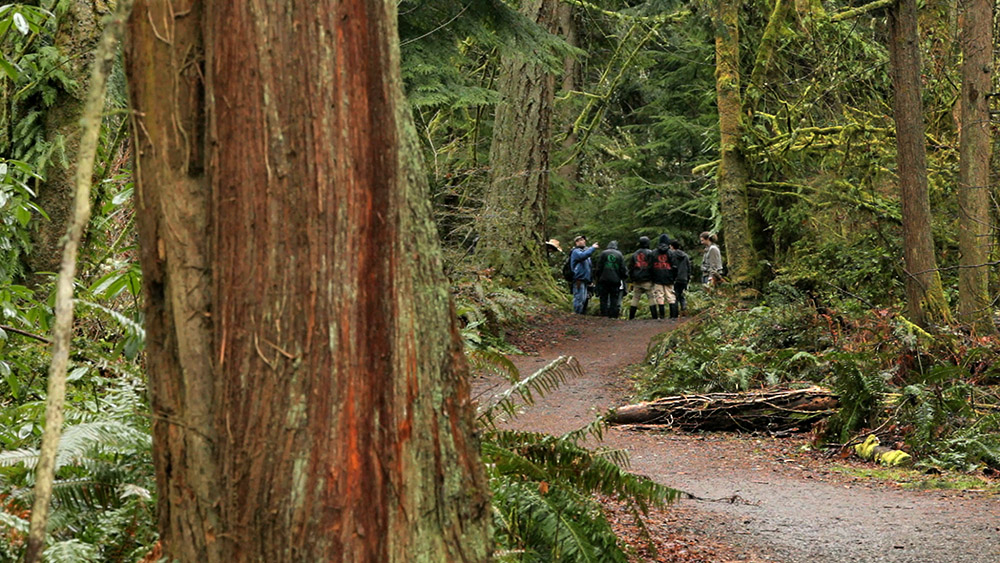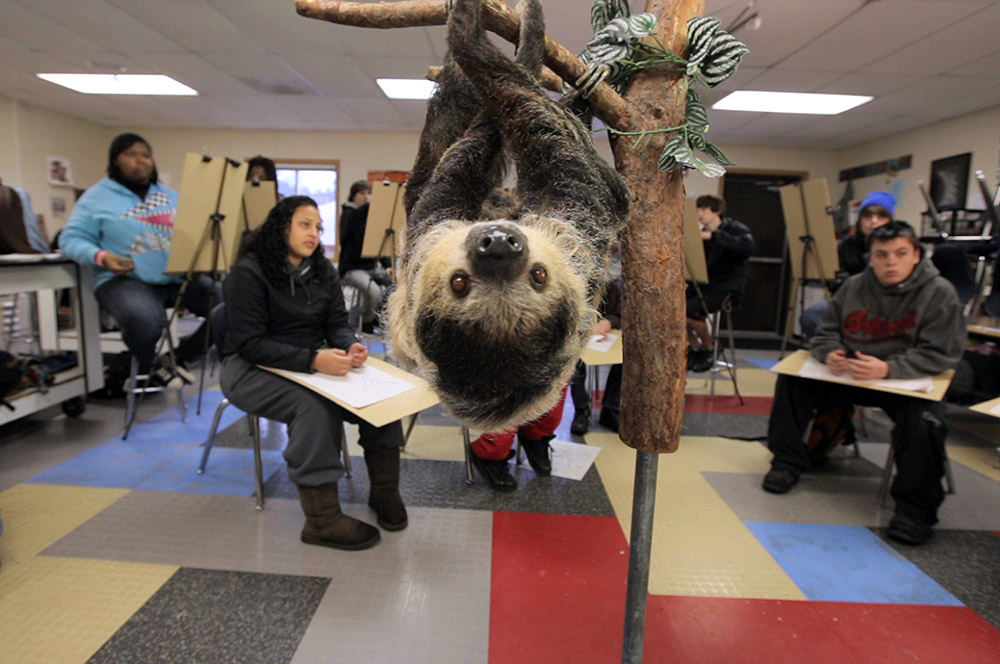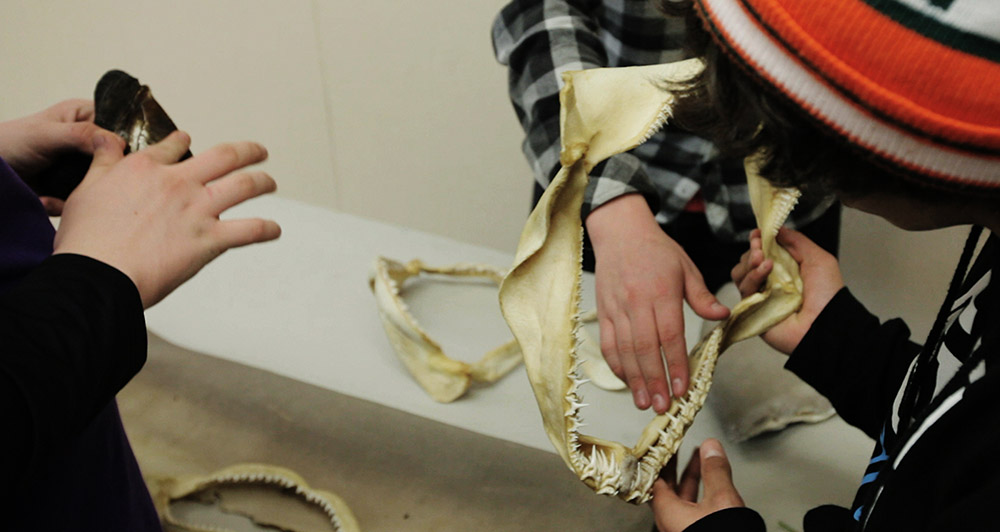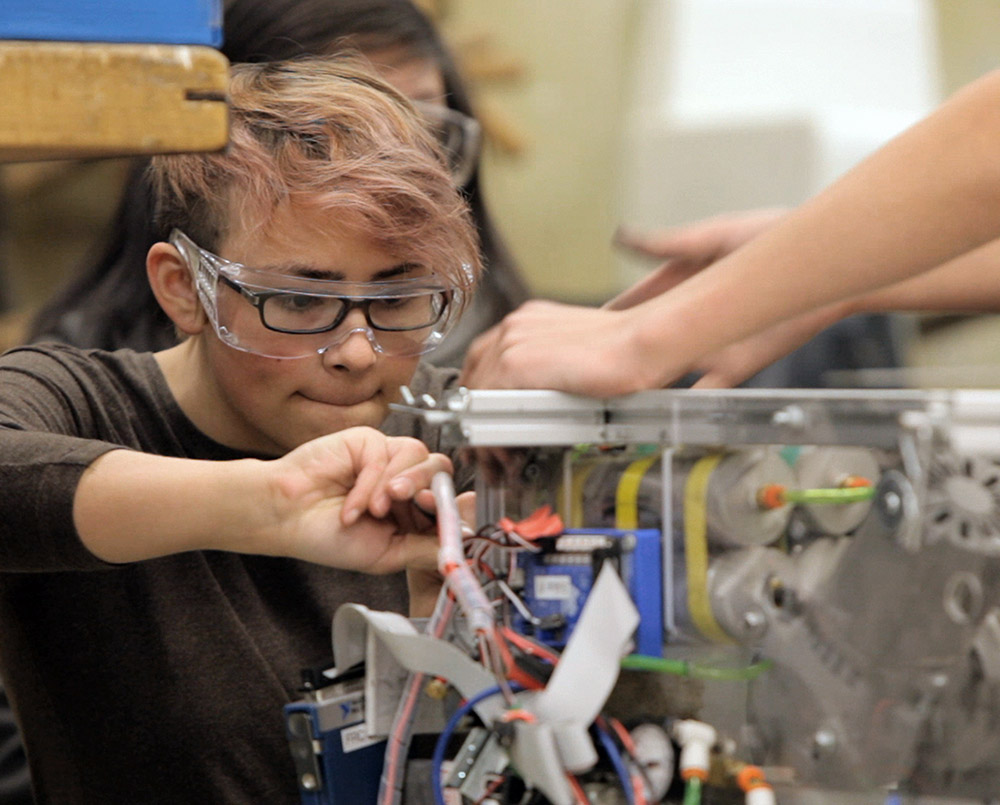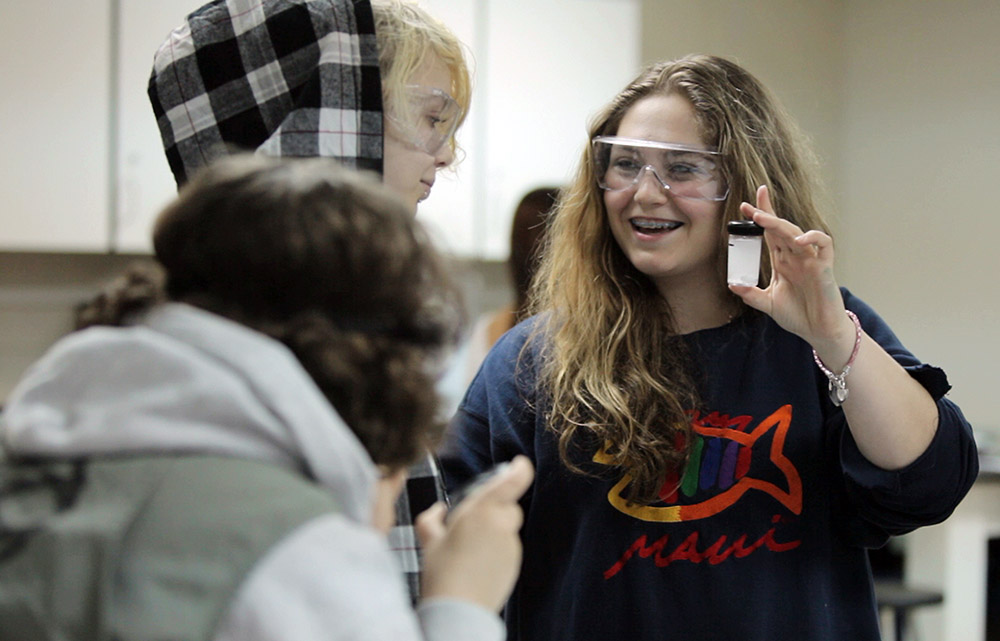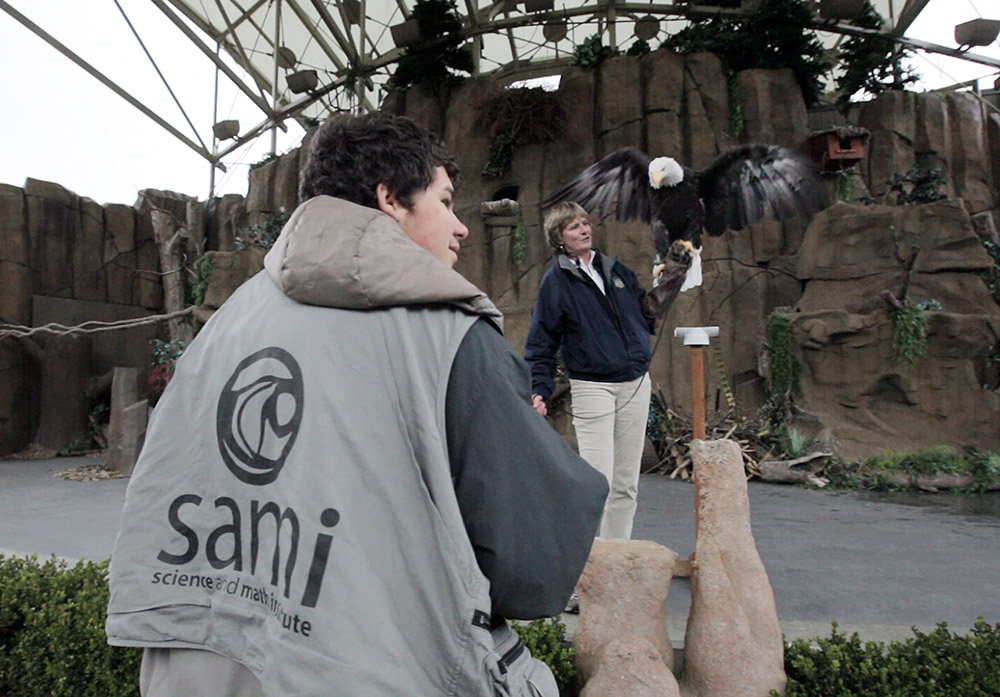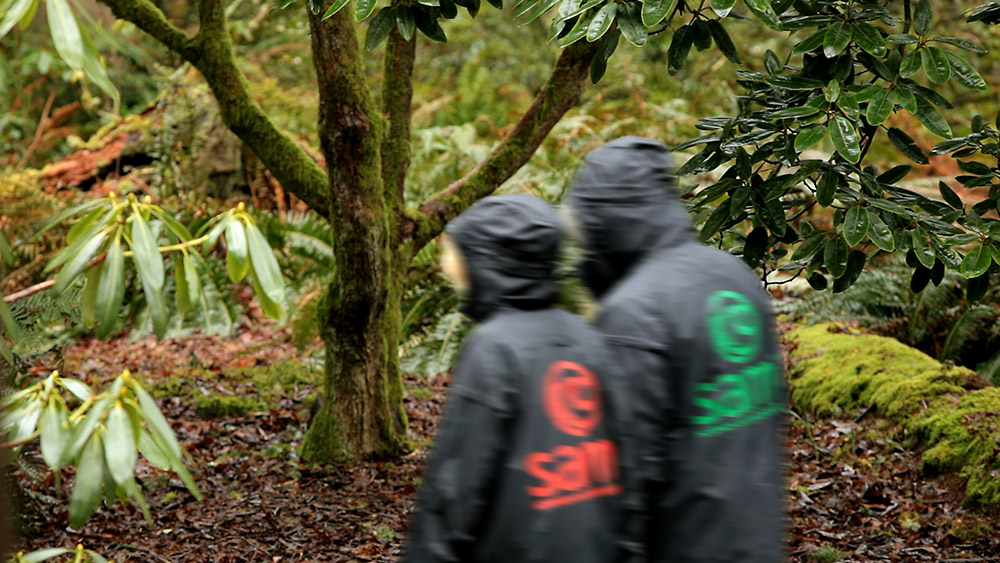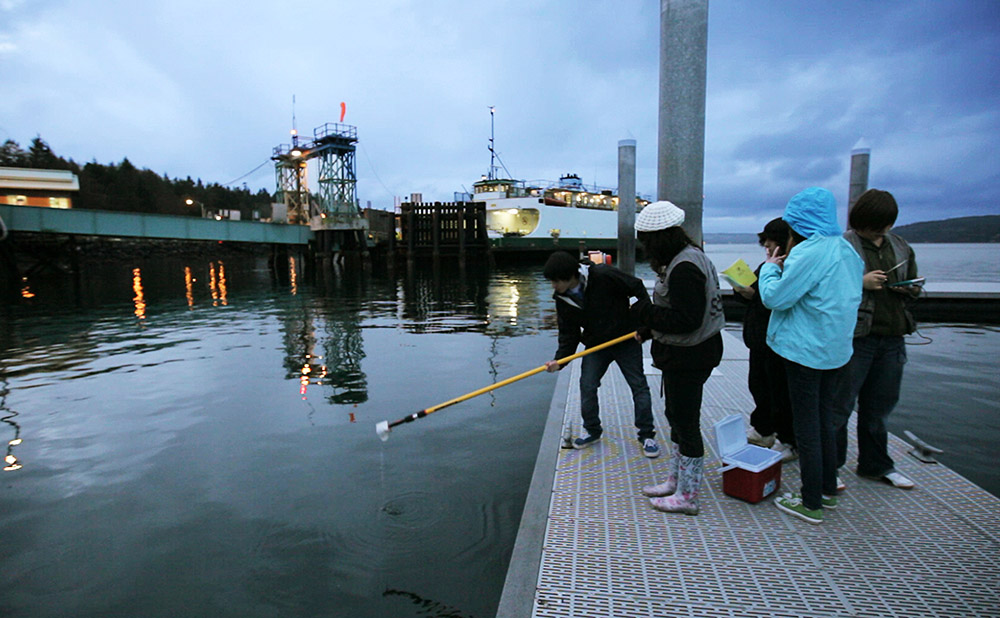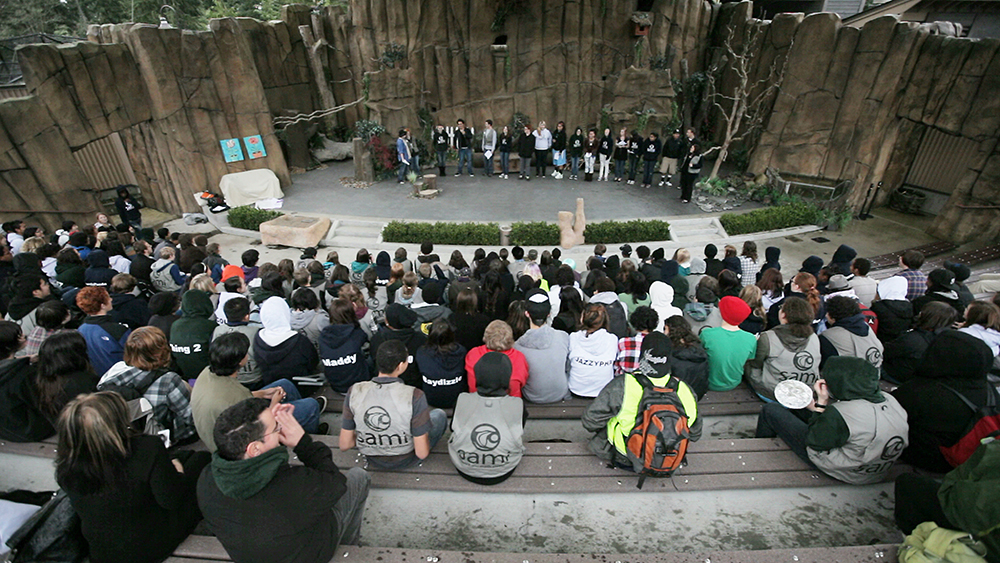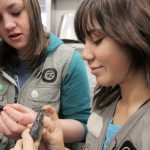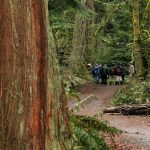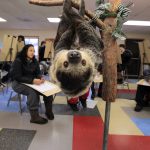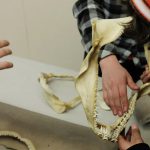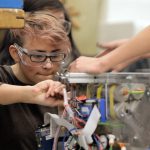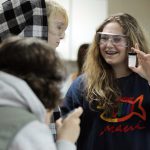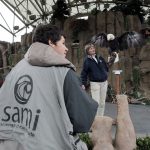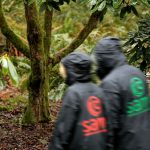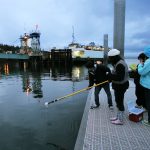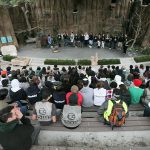For most communities, school buildings are our largest public investment. Paradoxically, schools are usually designed apart from the broader social fabric of the communities they serve. What would happen if the rich cultural, natural and recreational assets of our communities were leveraged in creating learning environments? The answer can be found in Tacoma, Washington.
Creating a School Grounded in Community Partnerships
Tacoma Public Schools established the Science and Math Institute (SAMI) within Tacoma’s Point Defiance Park with 702-acres of old growth forest, steep-bank waterfront and an acclaimed research-oriented zoo and aquarium. Since 2009, 450 high school students and teachers have utilized existing facilities in the park, 14 portables and the abundant ecological habitats surrounding them. By using Point Defiance Park and the Zoo setting as a whole school for exploratory, project-based learning the partnership provided students with a naturalized, immersive learning environment as a ‘lens for learning’. In partnership with Metro Parks Tacoma and Point Defiance Zoo and Aquarium, the concept of a new home for SAMI became an Environmental Learning Center for all.
Community Vision
With the intent of making the new facility both a school and community amenity, a fresh collaborative planning approach needed to be created to bring a diverse set of stakeholders into the design process. The unique pedagogical values defining SAMI’s curriculum and supporting activities in nature include “empathy, community, thinking and balance”. To bind these modalities to indoor/outdoor settings, the team conducted “scenario mapping” workshops; engaging students, teachers, zoo educators, curatorial staff, community partners and local artists. Over 100 scenarios described daily life, special events and particular activities that strengthen each student’s personal sense of community as well the greater perspective of the Tacoma community.
As envisioned in the “scenario mapping” exercises, the new Environmental Learning Center will be host to citizen scientist workshops, artist exhibitions, business conferences, health fairs, social functions and fundraisers and partnerships with institutes and universities. The Zoo will host interpretive exhibits and the park district will provide environmental orienteering and studio workshops. Among the many ideas and aspirations one thing was clear, the shared use of community assets and the partnerships that are formed create powerful learning experiences for students, teachers and community alike. Teachers, students, staff and volunteers all have a common mission of interpreting the valuable assets of the park and zoo environment for deeper knowledge and greater empathy. Students are part of a larger mission and their schoolwork will create a broader awareness and understanding by the community at large.
A Community Learning Center
The new $11.5M Environmental Learning Center will be located in the park where the Zoo and forest meet. As a learning center for the entire community, students have a unique opportunity to engage with experts and passionate volunteers in the service of the unique natural environment of the park. The Zoo’s research and community outreach staff will be co-located with teachers in a collaborative planning area. Community volunteers working in the Zoo will have a central workshop for their activities alongside the other workshops in the building. Learning will be multi-generational in the Environmental Center with the inclusion of a nature preschool, serving students from all of the PreK-5 schools in the district.
Opening in the fall of 2017, the new 30,000sf facility will include eight workshops for discourse, design, experimentation and fabrication. In each workshop, there will be secure storage for school supplies and projects in order to make the entire educational facility open for public use after school hours. A directive from the visioning process was to make the place feel “not precious” so that students and the community will be empowered to use the building as a tool in their exploratory learning. All of the walls will be sheathed with plywood to invite project activities, display of ideas, research, art, three-dimensional projects or experiments for small or large group brainstorming and presentation. There will be visual connections to the outdoors from every interior space to see the forest, Zoo and waterfront in the distance. At the heart of the school, a large communal setting will connect all the workshops. This area will double as a community meeting space, a place for conferences and retreats. The communal space will connect directly to the Zoo, to an outdoor deck and a bridge that transports students to the forest trails; making the building just one part of the whole learning ecosystem of the park.
A Catalyst for Partnerships
The cultural, natural and recreational – as well as professional and commercial – assets of our communities are rich resources to be leveraged. Schools can be a catalyst for partnerships that connect these resources in the service of the community broadly and the school itself. Tacoma Public Schools is demonstrating that if these assets are leveraged to engage and serve our communities more broadly along with our kids, fostering a greater sense of ownership by the community and rich relationships with teachers and students, it makes them more impactful and successful as schools.
If we start to think of our school buildings as being assets on a community-wide scale, connected to and embedded within the community and not apart from it, then we will truly transform what school buildings can be and thereby what school itself can be.

